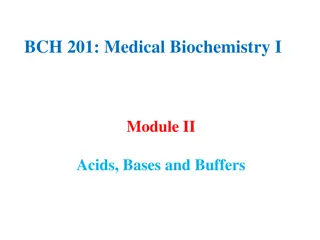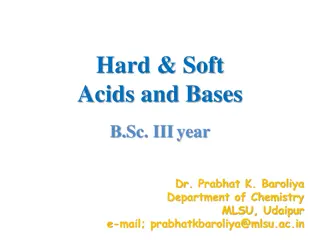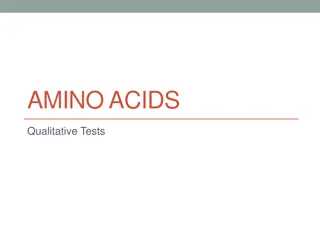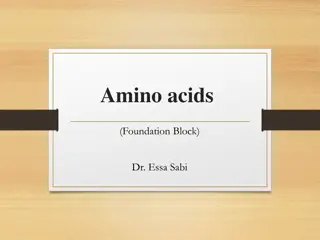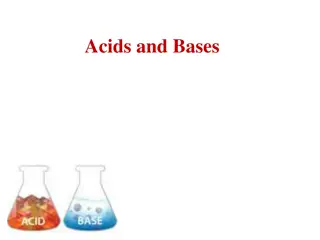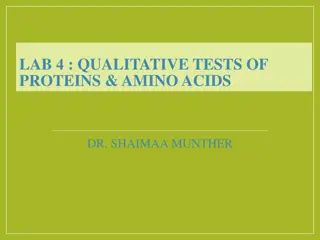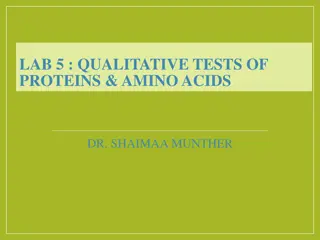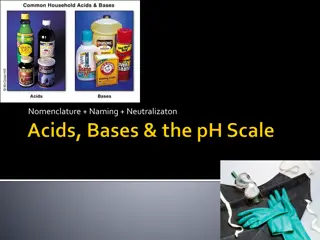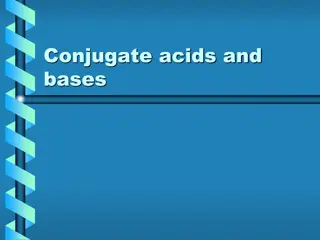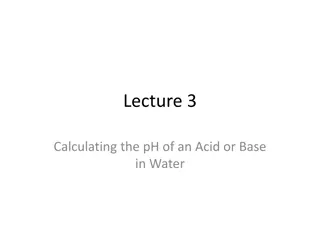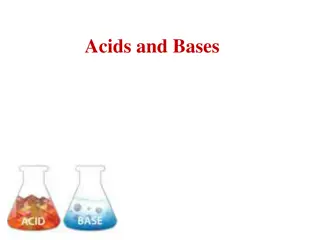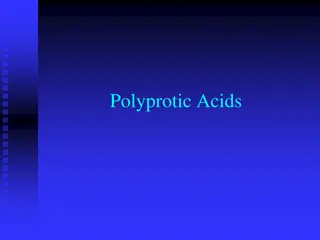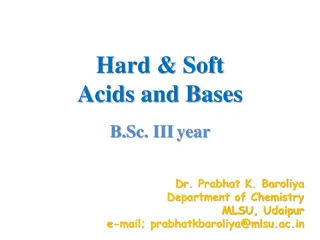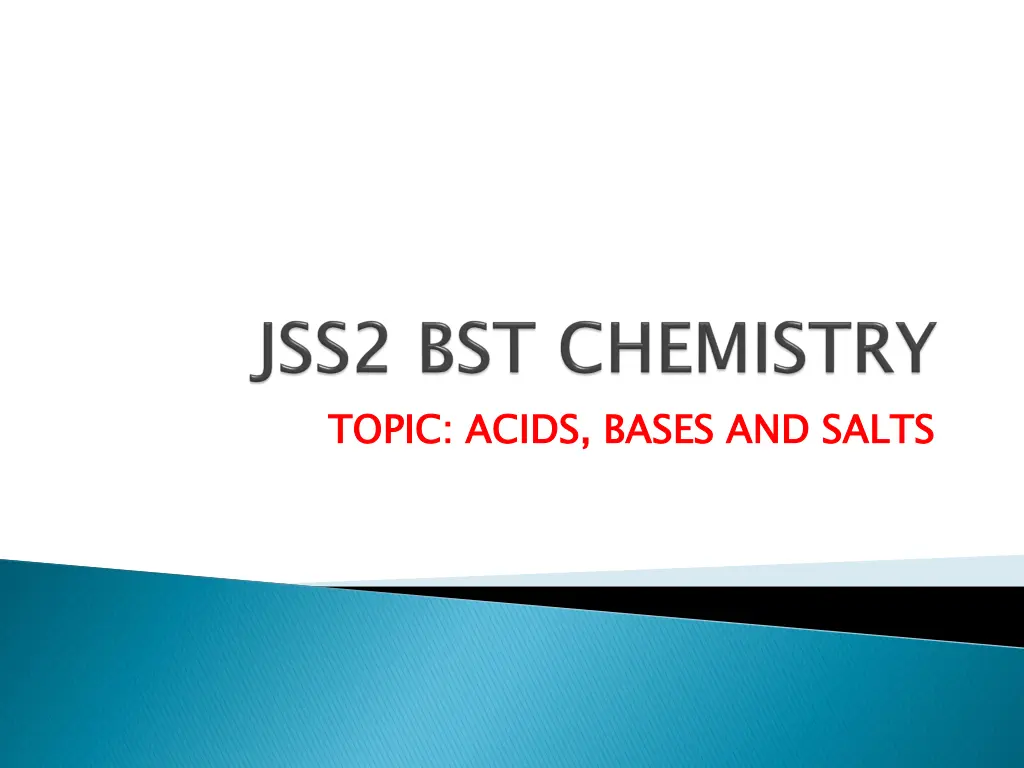
Understanding Acids: Types, Properties, and Reactions
Explore the world of acids, including types, physical and chemical properties, and common reactions. Learn about organic and inorganic acids, their physical characteristics, and how they interact with other substances.
Download Presentation

Please find below an Image/Link to download the presentation.
The content on the website is provided AS IS for your information and personal use only. It may not be sold, licensed, or shared on other websites without obtaining consent from the author. If you encounter any issues during the download, it is possible that the publisher has removed the file from their server.
You are allowed to download the files provided on this website for personal or commercial use, subject to the condition that they are used lawfully. All files are the property of their respective owners.
The content on the website is provided AS IS for your information and personal use only. It may not be sold, licensed, or shared on other websites without obtaining consent from the author.
E N D
Presentation Transcript
TOPIC: ACIDS, BASES AND SALTS TOPIC: ACIDS, BASES AND SALTS
Define an acid Mention the types of acids Mention the physical properties of an acid Mention the chemical properties of an acid
An acid is a substance, which when dissolved in water produces hydrogen ion as the only positive ion.
Examples of an acid include: H2SO4 (Tetraoxosulphate(IV)acid), trioxonitrate (V) acid (HNO3), acorbic acid, fatty acid, citric acid etc.
A dilute acid is a type of acid which has a very high concentration of water. In short form, dilute acid can be written as dil. Acid.
This is an acid solution in which the concentration of the acid is very high. In short form, concentrated acids are written as, Conc acids.
There are two main types of an acid: organic and inorganic acids
Organic acids: these are acids that are gotten from natural sources like threes and other food product. Eg, ascorbic acid, citric acid, lactic acid etc.
Inorganic acids: these are acids that can be prepared in the laboratory. They don t usually occur in nature.
The following are the physical properties of an acid 1. They have a PH less than 7 2. They turn blue litmus paper red 3. Concentrated inorganic acids are corrosive 4. Organic acids are sour to taste.
1. Reaction with metals: acids reacts with metals to form a salt, liberating hydrogen gas in the process. Eg 2HCl + 2Na 2NaCl + H2
1. Neutralization reaction: acids undergo neutralization reaction with alkalis to produce salt and water only. H2SO4+2KOH K2SO4+ 2H2O
Reaction with trioxocarbonates (IV): acids reacts with trioxocarbonates (IV) to produce salt and water, liberating carbon (IV) oxide. Na2CO3+ 2HCl 2NaCl + H2O +CO2

